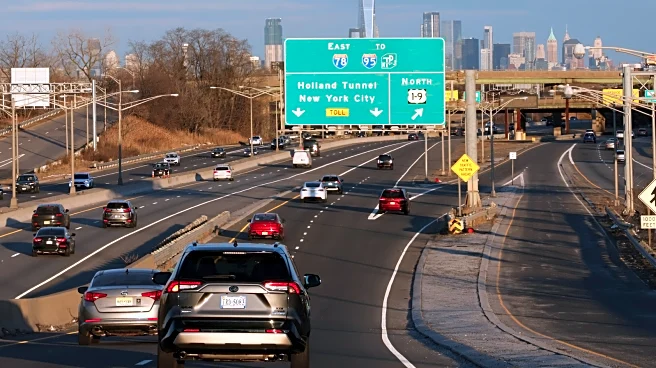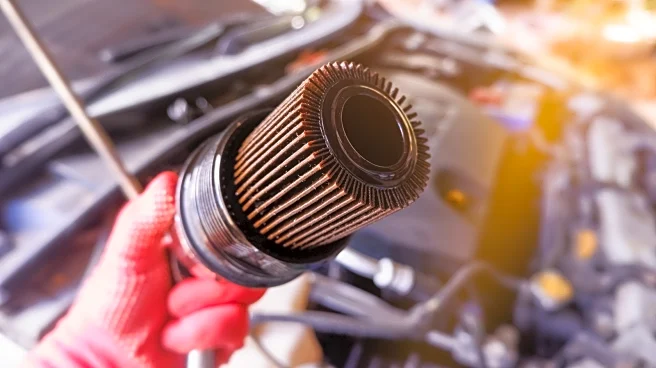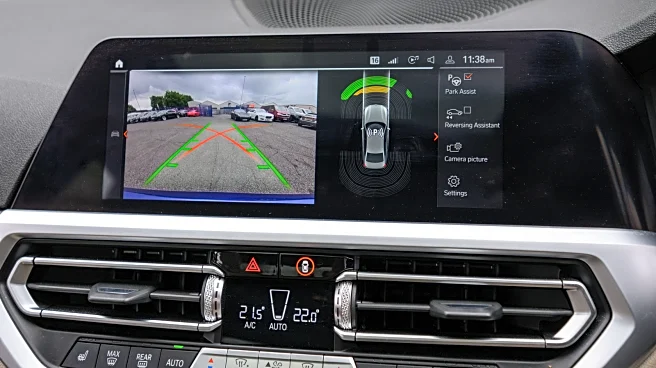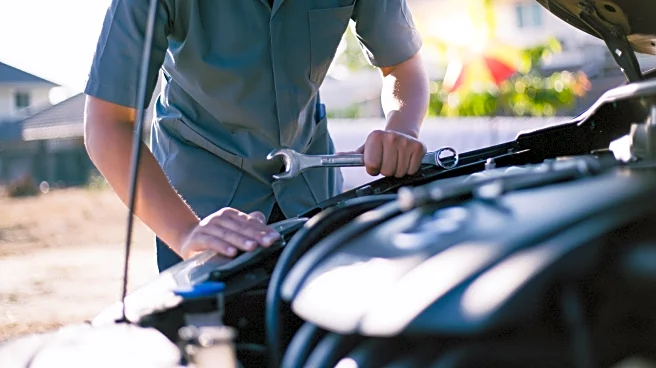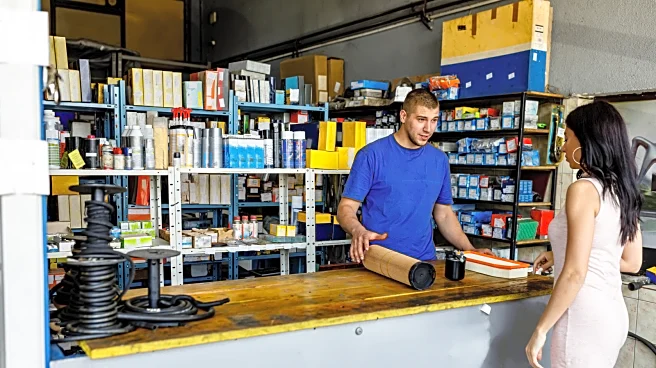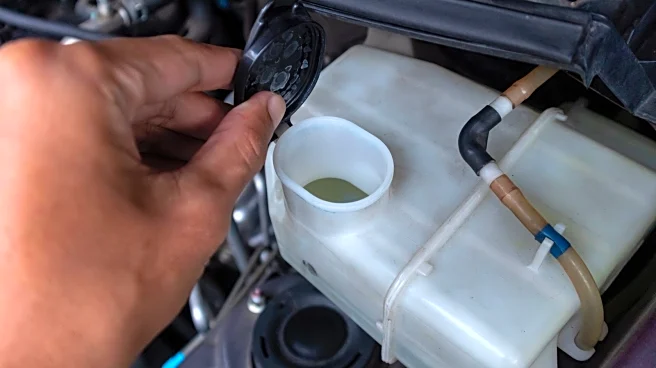
perhaps the worst potential nightmare for drivers — and one that's straight out of an action movie — is experiencing brake failure while driving on the highway. Proper braking depends on several components working in tandem, and inadequate service or heavy demand can cause any of them to fail.
Glazed brake pads or worn-out disc rotors can reduce braking power by a significant amount, while a leaky hose or bad master cylinder might knock your brakes out completely. Brakes can also fail if they overheat
from riding them on downgrades or when hauling or trailering a heavy load. Brake failure can also be caused by something as simple as a bottle or travel mug getting stuck beneath the brake pedal so you can't press it down.
If your brakes fail at highway speed, there are a few measures you can take to try and stop safely. This is a very dangerous situation, so make sure everyone in your car is restrained properly according to age and size before you try one of these maneuvers. The most important consideration — and one that's easier said than done — is that remaining calm and composed behind the wheel gives you the best chance to stop the car safely. Keep both hands on the wheel, take a deep breath, and try and recall the following tips.
Read more: These Are The Dumbest Car Crashes You've Ever Seen
Signal Your Intention To Pull Over

It's essential not to make sudden moves of the steering wheel that could lead to loss of control, so do your best to keep the car headed straight ahead at first. Make sure your right foot is not on the gas pedal, and assess the road ahead and any potential escape routes on either side of the highway. Activate your four-way hazard flashers until you decide it's safe to pull over, then turn them off and use the appropriate turn signal.
Keep the engine running and the key in the 'on' position; turning it off will disable power steering and the column might lock in place and cause a spin or flip. Have a passenger see if there's something lodged beneath the brake pedal, or check this yourself if you can do so without taking your attention off the road. If there's no physical obstruction, try pumping the brake pedal firmly and repeatedly. This can help restore hydraulic pressure if there is air in the lines or the fluid is low. If you feel the brakes coming back, apply gradual, steady pressure until the car stops. This technique can not only help you stop safely, but might also indicate that your brakes failed because of a loss of hydraulic pressure.
Downshift And Move To The Right

One effective way to slow down a car when the brakes go out is with engine braking, where you use the engine's internal resistance to reduce speed. If your car has a manual transmission, downshift through the gears to bring the vehicle's speed down. In a car with an automatic transmission, just lifting your foot off the accelerator will provide some engine braking. Some automatic cars also have a manual mode (indicated by a "+/-" marking near the shift lever or the presence of paddls shifters). Regardless of how it's done in your car, downshift slowly and deliberately to avoid dangerous wheelspin. It's also important not to coast with the clutch depressed or shift into neutral. This could cause the car to gain speed without engine resistance, particularly on downhill stretches.
Most EVs don't have a traditional transmission to enable this technique, although regenerative braking uses generators to harness kinetic energy from the motor to charge the batteries. If your EV brakes fail, see if you can safely switch to a higher regenerative braking setting and slow the car more quickly. At the maximum regen setting and in certain road conditions, you might even be able to stop the car completely. Whether you're downshifting through the gears or using regenerative braking to slow down, put your signal on and move to a safe spot out of the highway's travel lanes.
Try The Emergency Brake

Another helpful way to slow down the car when its regular brakes fail is by using the emergency brake, or parking brake. This system usually works independently of the main braking system and can still function if the primary brakes fail. Like with engine braking, the emergency brake must be applied gently and gradually to ensure that the tires don't lock up and cause a spin. You can also use the emergency brake along with engine braking to slow down the car quickly.
Gradual application of the emergency brake is easy if it has a hand lever or ratcheting pedal, but many modern cars have an electronic parking brake which is activated instantly and fully at the touch of a button. A single press engages the parking brake when the car is stationary, but in most cars you must hold the button to activte the emergency brake if the car is in motion. Once you have safely stopped, you should be able to deactivate the emergency brake and continue on your way.
Stop The Car With A Controlled Crash

If you've scrubbed off some speed but still haven't stopped the car, you can try to use friction from contact with a physical object to do so safely. Metal guardrails and concrete highway dividers can be hit at a shallow angle and then steered into to stop a car. If the road has a flat, soft shoulder with mud, loose dirt, or sand, that's another good option; you might even come across a runaway vehicle ramp. These extra spaces off to the right side of some mountain highways are filled with gravel or sand deep enough to stop a speeding tractor-trailer, so you should be fine in your car, pickup, or SUV. If you're going to pull to either side of the road, signal in the appropriate direction and use your mirrors to make sure you get to the guardrail, shoulder, or median safely. Stopping a car in any of these ways is especially risky if you're going at very high speed or have passengers on board.
If you do think pulling off the road gives you the best chance to stop safely, make sure you do so where there are no trees, utility poles, or steep slopes — any of these common roadside features can mean bad news if you hit them at speed. Once you have come to a stop, turn the car off, activate the hazard flashers, and call or signal for help. Flares, reflective vests, and safety triangles are helpful to let other drivers know you are in trouble. As the saying goes, an ounce of prevention is worth a pound of cure, and investing in these basic items and keeping up with brake system maintenance can go a long way toward keeping you and other motorists safe.
Want more like this? Join the Jalopnik newsletter to get the latest auto news sent straight to your inbox...
Read the original article on Jalopnik.
